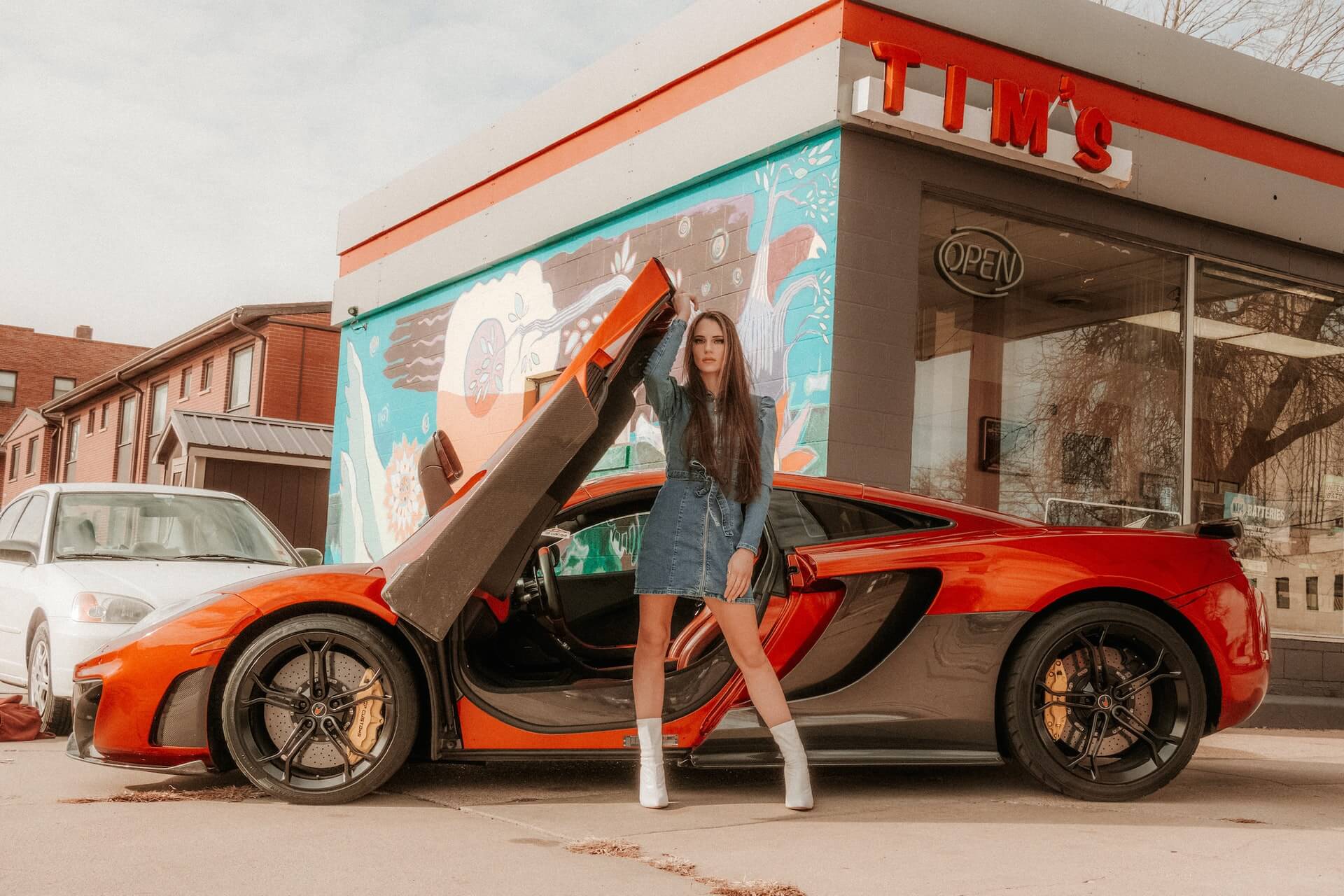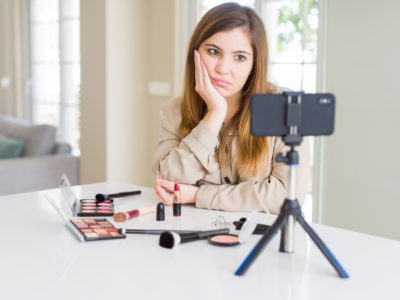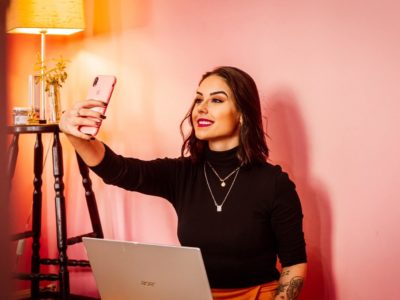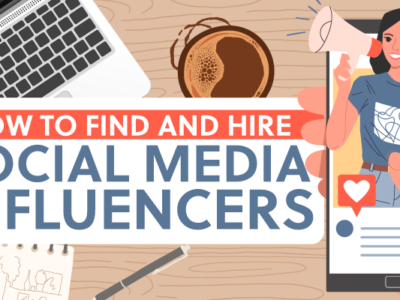Social media is one of the most (if not the most) popular marketing channels today. With its growing popularity, brands are working hard to build a powerful online presence. This makes competition in the online world fierce.
As a marketer, you need to find innovative ways to reach and appeal to your target audience without appearing too sales-y with your content marketing. In this digital era of marketing, self-promotional strategies don’t work as effectively as they used to.
Hence, the industry has shifted to strategies like influencer marketing. It’s no longer something that’s “nice to have” in your arsenal; influencer marketing is a must-have. In 2021, almost 93% of marketers planned to use Instagram as their premier platform for influencer marketing, with Instagram Stories and TikTok closely behind.
The Appeal of Influencer Marketing
Influencer marketing isn’t a new concept. Marketers used to capitalize on the mass appeal of celebrities for brand outreach. Celebrity endorsements are similar to influencer marketing. Brands ask the help of a well-known person to share their product/service with a greater audience.
The big difference between the two is that with celebrity endorsements, the celebrity is the messenger of the brand message. The brand takes care of the script, production, and distribution, while the star only serves as the face.
On the other hand, with influencer marketing, the influencer is the one who creates the entire message. They conceptualize the shoot, take their own photos, and write their own captions. From an audience perspective, the influencer’s message is theirs, emulating a sense of authenticity and credibility that the public finds appealing.
The relatability factor of influencers is what makes them such a hit among their audiences. Celebrities feel out of reach as the public is well aware of their lifestyle and the team behind their perfect looks. With influencers, audiences think of them as ordinary people who share the same struggles and lifestyles.
However, as the influencer marketing industry grows, the market becomes increasingly oversaturated. This causes consumers to be bombarded with more sponsored posts as they scroll through their feed. With consumers constantly exposed to an endless conveyor belt of branded posts, is influencer marketing still an effective strategy? Do consumers find this repetitive? Are audiences undergoing influencer fatigue?
What is Influencer Fatigue?
Influencer fatigue is when audiences get tired of seeing repetitive influencer content. People are smarter when it comes to consuming content; they no longer blindly absorb what’s presented. They can discern authenticity from their feed.
For example, when a user sees an influencer post a selfie advertising a supplement with the caption, “Can’t start the day without these!” Later on, after a few scrolls, they’ll see a similar post from a different influencer. When people see identical posts, they don’t stand out, leading to audiences easily dismissing them. If the occurrence happens more than usual, consumers can get tired and unfollow the influencer.
In the annual Social Media Industry Benchmark Reports done by Rival IQ from 2020 to 2022, you’ll observe that influencers’ weekly Instagram posts increased in the past two years:
- In the 2020 report, influencers posted an average of 0.56 Instagram posts per day (3.92/week).
- In the 2021 report, influencers posted an average of 3.6 Instagram posts per week.
- In the 2022 report, influencers posted an average of 4.47 Instagram posts per week.
While you see more and more influencer posts, audiences don’t necessarily engage that much with them. According to the reports, the Instagram engagement rates per post are as follows:
- 2020 – 1.67%
- 2021 – 1.42%
- 2022 – 1.18%
With these numbers, you can tell that there are signs of influencer fatigue. As a marketer, influencer fatigue is a real issue you need to be concerned with as it can affect your marketing budget and strategy. But, before you make adjustments, you must understand its cause.
From Instagram Fatigue to Canceled Influencers: Signs of Social Media Fatigue in Your Audience
Here are the signs to look for if you’re worrying about your audiences experiencing influencer fatigue.
1. Low engagement
Low engagement is one sign that your audience may be experiencing social media fatigue. An example is a post that has zero or very few likes or shares. You may have grown accustomed to seeing your followers enjoy your posts, but then suddenly, everyone stops caring about them.
To address this problem, you must identify your target market and speak to them directly on issues that strike them as personal. Understanding your target audience’s preference is key to achieving this.
Don’t let your audience think that your influencer has gone insignificant. Make sure you curate the content they post to reflect your brand better.
2. Low conversion rate
If you do not generate the conversions you desire from your social media postings, your audience may be experiencing social media fatigue. Typically, some conversion follows with compelling content.
Great content entices and encourages your audience to try out your product or service. If you’re not seeing your metrics increase, you must find new ways to be relevant and entertaining. This is particularly true if your traffic stays the same and your earnings are not growing.
3. Users do not read your content — they only browse
Every time you put out new content, it’s always a wager of whether or not your audience will read it. The human attention span has decreased to 8 seconds from 15 seconds, calling for compelling, well-developed posts.
Here, you must create material that is engaging, concise, and to the point. Remember that people would want to focus on brief, focused communications rather than long, dull ones. Likewise, social media is designed for snappy, concise messages that can quickly grab the reader’s attention and consequently hook them to the brand’s campaign.
Why are People Switching Off on Influencers?
Audiences aren’t as passive as they used to be. They look for (and engage with) authentic and meaningful content. With sponsored posts bombarding their social feeds, it isn’t that surprising for audiences to experience influencer fatigue. Here’s a deeper look at the reasons people are getting tired of influencers:
- People keep seeing sponsored posts on their feed
Your mind isn’t playing games with you when you think you see more sponsored content than usual on Instagram. A Statista survey shows a significant increase in brand-sponsored influencer posts on Instagram from 2016 to 2020. The numbers grew from 1.26 million posts to around six million posts in 2020. These posts were the ones with the hashtags #ad, #sponsored, #spon, and other tags that indicate sponsored content.
`
Nowadays, you won’t only see sponsored content on posts but also in stories, making it more likely for you to stumble upon sponsored content every time you open a social app. When you see a lot of brands on your feed, it can negatively impact the user experience because you feel like people are sales-talking you left and right.
- A lot of sponsored content looks repetitive and similar
What makes the influx of sponsored content tiring is it can all look the same after some time. If you take the time to observe, stereotypical influencer content is more common than you think. There’s the aesthetically shot breakfast spread or perfectly posed mirror photo advertising a dental product.
Clichéd content leaves 47% of consumers fatigued. As the frequency of sponsored content increases, the quality decreases. The reason why audiences like influencers is because they feel authentic. If posts lack originality and appear to be templated (branded hashtags, product placement, brand mentions), it can take a toll on consumers.
- Some influencers use social causes for commercial gain
Whether it’s the Black Lives Matter movement or Pride Month, some consumers feel like influencers or brands feign their dedication to these causes just to join the bandwagon. They’ll post about the cause then somewhat relate it to the brand.
Posts about social causes should spread awareness and not be for commercial gain. Ingenuine social cause posts are unethical and contribute to people’s distrust of social media. By doing this, influencers feel inauthentic, straining their relationship with their audience.
How Can Brands Beat Influencer Fatigue?
Brands should always post genuine and engaging content that attracts audiences and promotes the product/service. It isn’t too late to make changes. Influencer marketing is one of the most effective online marketing tools. You can reap great benefits by applying best practices that combat influencer fatigue.
- Try focusing on micro-influencers
Major influencers may have millions of followers, but not all are real. The Twitter purge of 2018 proved that fake accounts follow the biggest social media influencers and celebrities. Katy Perry lost 1.5 million followers during the purge, while Taylor Swift lost around 2 million.
Bigger doesn’t always mean better. The popularity of top influencers can attract a lot of fakeries, which can leave you doubting the percentage of their actual audience reach. Micro-influencers may have a small audience, but they are more dedicated, niche, and targeted. Smaller influencers can create a more meaningful connection with their audience than big-name influencers and celebrities, increasing engagement and conversion rates.
- Give influencers more creative freedom
Nowadays, users can easily spot inauthentic content. As mentioned earlier, similar and repetitive content feels insincere. So, when brands hold mass influencer campaigns with strict guidelines, the audience can sniff inauthenticity because they’ll be seeing the same type of posts on their feed.
Photos from untouchableblog.com
Take the Dior Saddle Bag relaunch influencer campaign, for example. It was a well-planned campaign where mega fashion influencers posted photos of themselves with the bag. The problem was that they all posted around the same time, sporting similar looks with the same bag and hashtag. Most of them didn’t even use #ad or Instagram’s Paid Promotion feature. When all your campaign posts look identical, and you bombard your audience with them, the campaign can look very one-note and carefully orchestrated.
As a marketer, you need to apply a hands-off approach to influencer marketing. By offering creative freedom, you can ensure originality. Don’t control the content too much, as you’ll lose the unique voice of the influencer, which is what attracts audiences in the first place.
- Choose influencers with similar values
When looking for influencers, followers and authenticity matter, but you should also consider choosing one with similar values to your brand. If your business values sustainability, it’s best to partner with someone who’s also an environmental advocate.
When an influencer finds themselves in controversy, many brands cut ties with them because their actions don’t align with the company’s values. You want the influencer to represent your brand. If their image is tarnished, yours will as well, putting your investment to waste. So, you must do your research and choose wisely.
What’s Next for Influencer Marketing?
The marketing industry is starting to shift from influencers to content creators. Content creators can influence, but not all influencers are content creators. The difference is that influencers usually post sponsored content for money and popularity, while content creators churn out content to share knowledge or build their brand.
Content creators may not have the same reach as influencers, but they have a greater level of authenticity and brand rapport. Partnering with content creators fosters true collaboration because the brand and the creator share a common set of values and genuinely care about the content they produce.
Aside from Instagram, TikTok is the next big platform for influencers and content creators. In 2021, there were around one billion Tiktok users. The app prompts users to be more creative, entertaining, and engaging than Instagram. It’s less polished as the content feels more casual and homemade.
TikTok also has the highest social media engagement rates per post. Whether the user is a micro or mega influencer, their engagement rate on TikTok is better than content on Instagram and YouTube. Numerous creators have emerged from the platform, including Bella Poarch and Charli D’Amelio. It’s about time brands notice and realize the potential of influencer marketing’s future.
Create Genuine and Creative Content
It’s almost impossible to scroll through social feeds like Instagram nowadays without stumbling upon a #sponsored post or an influencer posting a perfectly staged product photo. These types of content and tactics don’t work as well as they used to as they feel repetitive for users.
Consumers look for and engage with authentic content. As a marketer, you need to ensure that the content you put out with your influencer appeals to what users want. By applying best practices and staying ahead of the influencer marketing curve, you can beat influencer fatigue and continue to produce engaging content that delivers high conversion rates.
Contact the content marketing experts at Spiralytics today to learn how we can build your brand with authentic content!






